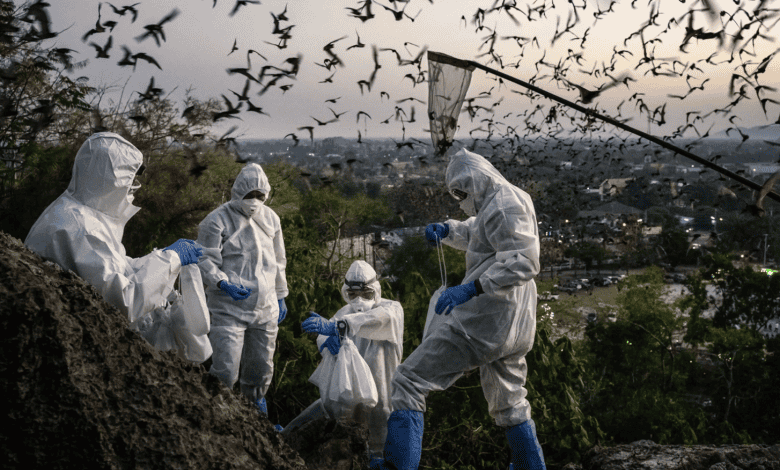Climate Change and Threat of Diseases

Amid rising temperatures and increasing humidity, climate change is creating a fertile environment in which some disease vectors can thrive and spread to new regions across the globe.
An expert warned that mosquito-borne diseases are spreading to new areas, including Europe, as a result of the changing climate conditions, the Guardian reported.
Favorable Conditions
Professor Rachel Lowe, head of the global health resilience group at the Barcelona Supercomputing Center in Spain, has warned that outbreaks of mosquito-borne diseases, such as malaria and dengue fever, are expected to spread across unaffected areas of northern Europe, Asia, North America, and Australia over the next few decades.
She said: “Global warming due to climate change means that the disease vectors that carry and spread malaria and dengue [fever] can find a home in more regions,” where people might be immunologically naïve and public health systems are underprepared.
She added that longer hot seasons will extend the seasonal window for the spread of mosquito-related diseases and increase the outbreaks that are complex to deal with.
Dengue, which is carried by the Asian tiger mosquito, used to be typically found in tropical and subtropical regions, as the insect’s larvae and eggs cannot survive freezing temperatures. But the longer hot seasons and less frequent frosts have made it the fastest-spreading mosquito-borne viral disease in the world.
Dengue is taking hold in Europe as the Asian tiger mosquito has become established in 13 European countries as of 2023: Italy, France, Spain, Malta, Monaco, San Marino, Gibraltar, Liechtenstein, Switzerland, Germany, Austria, Greece and Portugal.
Growing Risks
Climate breakdown exacerbates the problem, because it would fuel this spread, according to Lowe. She said that droughts and floods linked to climate change can increase the transmission of the virus, as stored water provide additional mosquito breeding sites.
If climate change is not addressed, “we can expect to see more cases and possibly deaths from diseases such as dengue and malaria across mainland Europe,” Lowe warned.
Professor Sabiha Essack, the head of the antimicrobial resistance unit at the University of KwaZulu-Natal in South Africa, warned that climate breakdown acts as a “threat multiplier” for antimicrobial resistance.
She said that climate change enables pathogens to increasingly cause diseases, leading to an increase in “antibiotic resistance and the spread of waterborne and vector-borne diseases of humans, animals and plants.”
Other viruses that are transmitted to humans through the bites of infected mosquitoes include the West Nile Virus (WNV). Higher temperatures accelerate the WNV replication rates in the mosquito, according to the Journal of Infectious Diseases.
Food and Water-borne Diseases
Rising temperatures accelerate the replication rate of certain pathogens, shortening the shelf-life of food. Salmonella infections increase during summer. Higher temperature and heavy rainfall influence the temporal and geographic distribution of Campylobacter in northern Europe. According to climate change projections, an increase by 200% by 2100 in Campylobacter in expected.
Climate change can exacerbate outbreaks of waterborne diseases, as a result of heavy rainfall and floods that are linked to the outbreak of diseases. Global estimates predict that temperature-attributable deaths from enteric infections could reach 10,000 – 75,000 per year by 2050 – 2065.
In addition, oceans warming has expanded the presence of marine bacteria, such as V parahaemolyticus and V vulnificus, which can cause severe gastrointestinal illness.
Immediate Action
Combating climate change implications on human health requires immediate steps to curtail the transmission of these diseases. The Council on Foreign Relations (CFR) laid out five actions that could mitigate the risks.
First, increase research and surveillance to figure out the links between climate change and diseases. Enhancing surveillance and data collection would allow researchers to identify emerging diseases, better predict future hot spots, and eliminate the pathogens posing the biggest risk.
Second, develop vaccines and treatment. Vaccines are a strong tool to prevent and control pandemics, but their development and production on a global scale is a complex and costly process as evidenced by the COVID-19 pandemic.
Third, move toward healthy equity, as low-income countries suffer the worst effects of climate change, although they are the least contributors to the crisis.
Fourth, reform global cooperation. Public health organizations need to prepare for future global health threats, through enhancing cooperation with the World Health Organization (WHO) and increasing global coordination on pandemic prevention and preparedness.
Finally, reduce emissions to prevent global temperatures from rising further, and remove existing emissions from the atmosphere.





